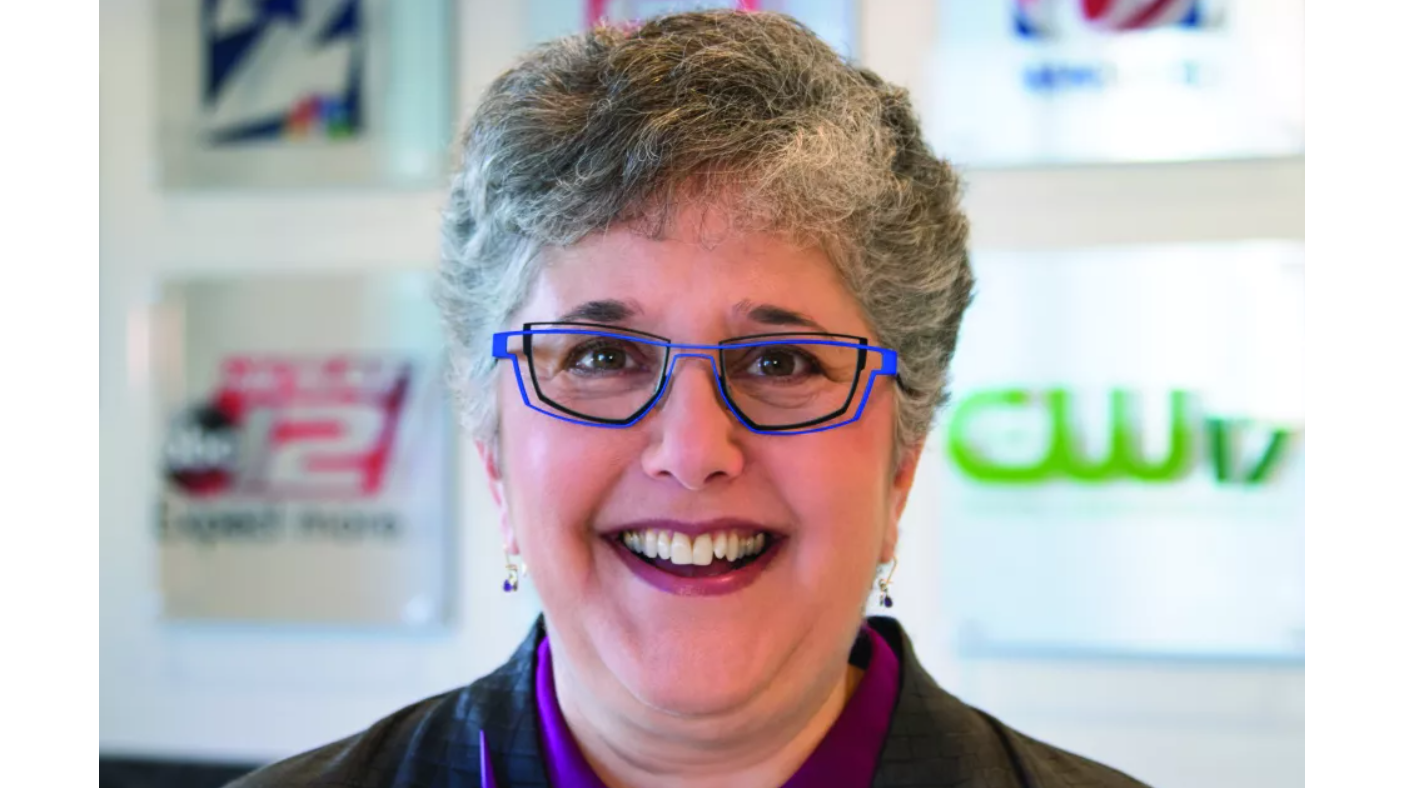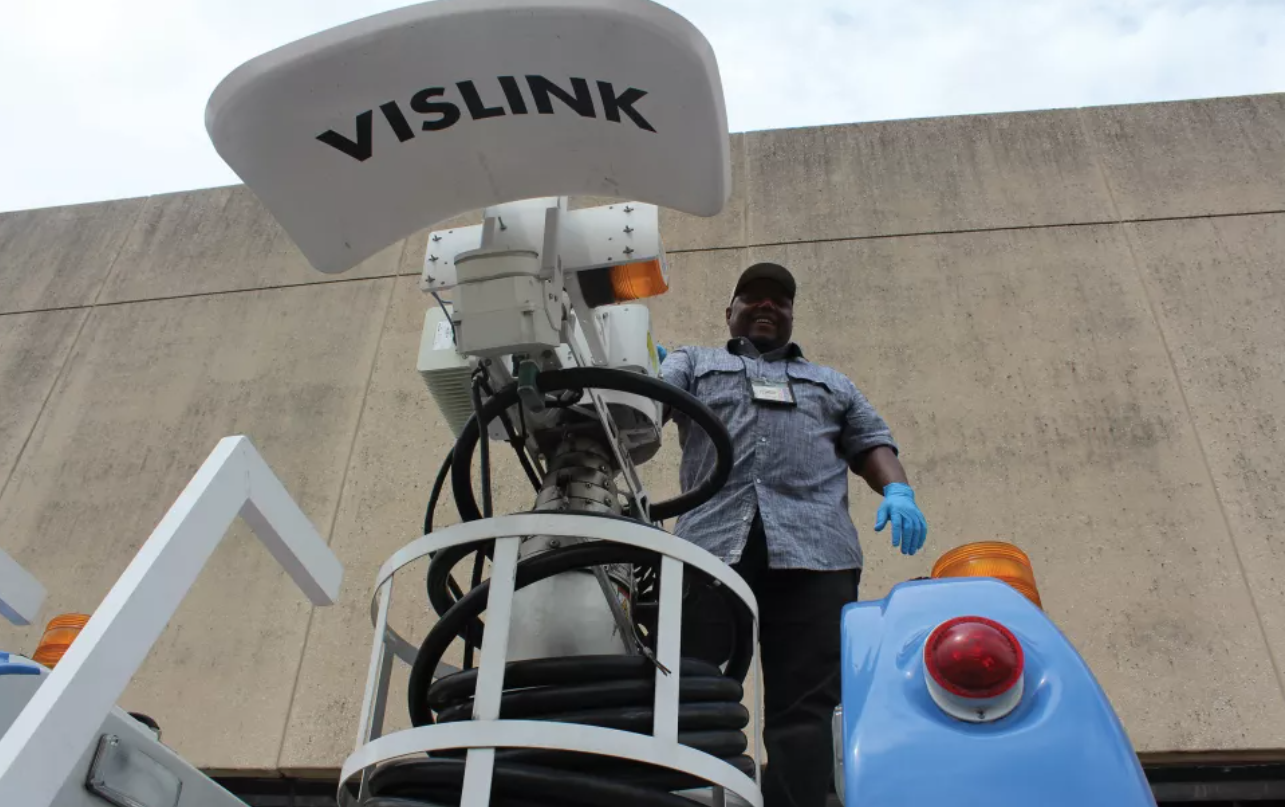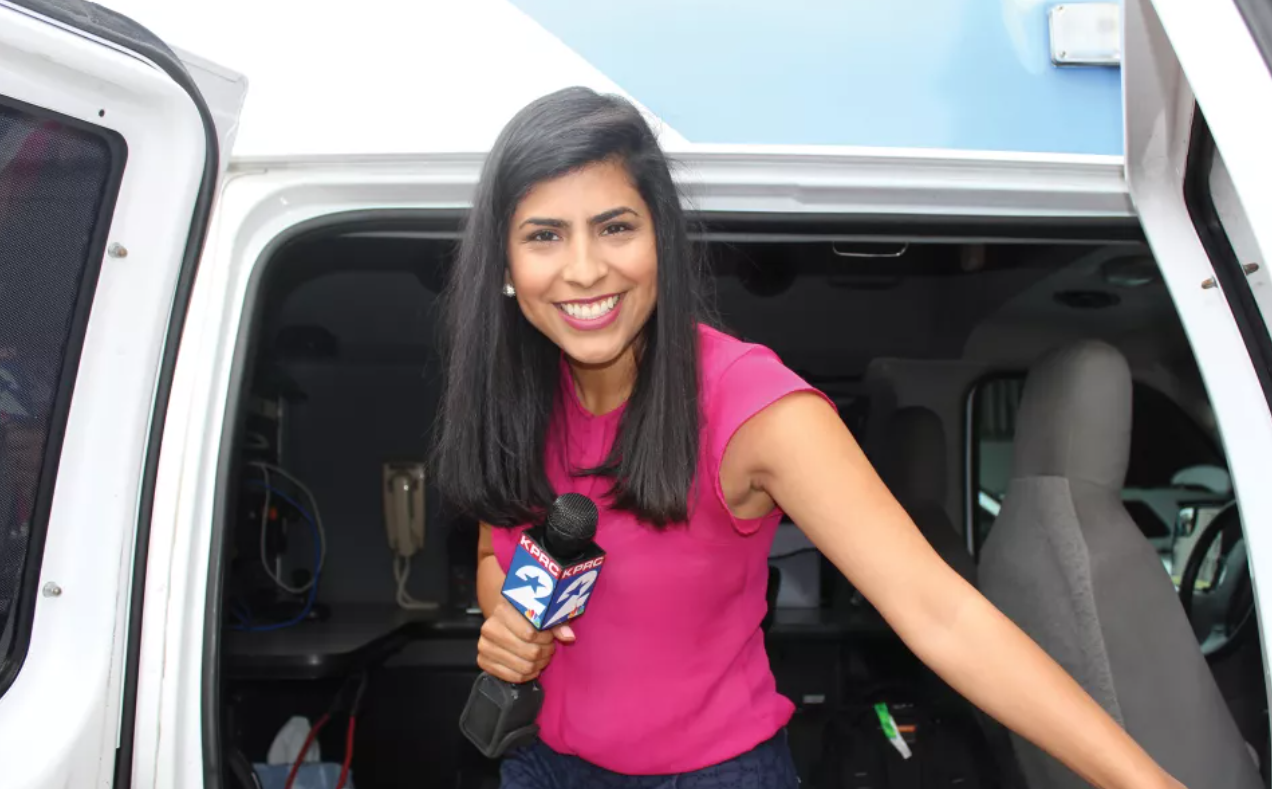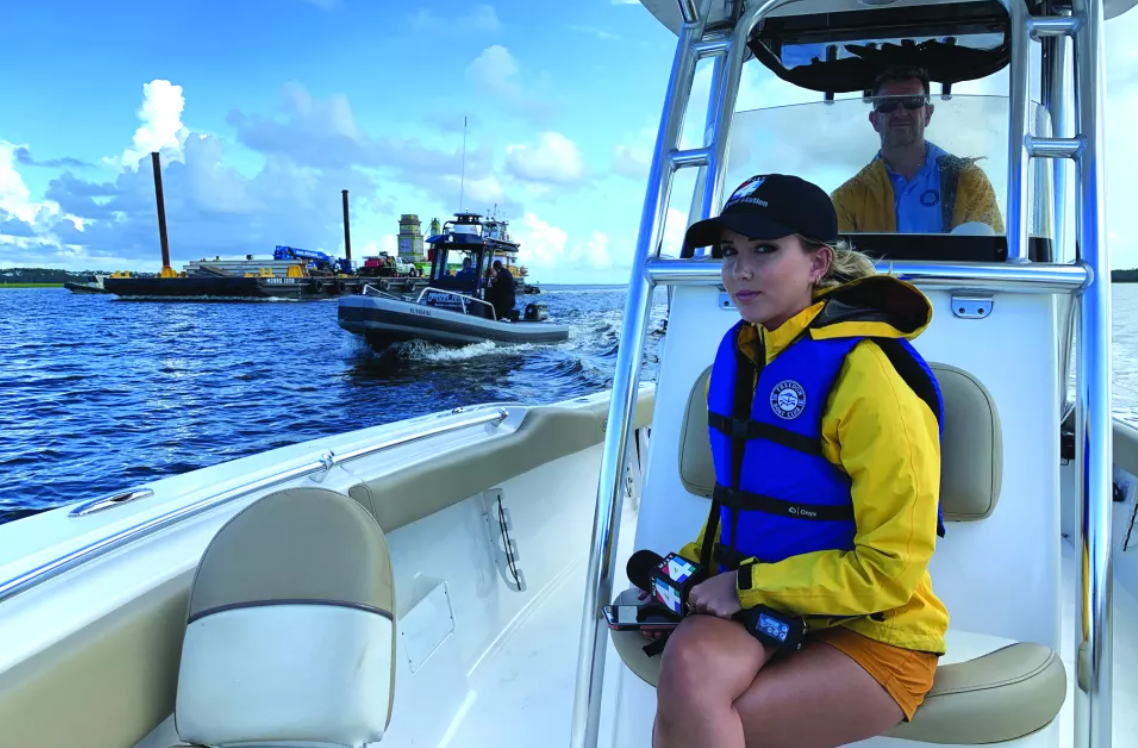Best in Broadcasting, Barr None
Graham Media Group chief on what sets her stations apart

Emily Barr, president and CEO of Graham Media Group, is TV Technology's sister publication B+C’s Broadcaster of the Year. Barr has led the broadcast TV division of Graham Holdings Group since 2012. Its stations include KPRC Houston; WDIV Detroit; WSLS Roanoke, Va.; KSAT San Antonio, Texas; WKMG Orlando, Fla.; and WJXT-WCWJ Jacksonville, Fla. Graham Media Group also has Graham Digital and Social News Desk in its portfolio.
Graham Media Group was named B+C’s Station Group of the Year in 2016. Barr came to Graham after a long run as president and general manager of ABC-owned WLS Chicago. She will be honored as Broadcaster of the Year at TVB’s Alt Forward Conference on Oct. 1.
Barr spoke with B+C about the stations’ coverage of COVID and racial equality, how they reach younger viewers and what the future looks like for local broadcast. “I have great faith in local television,” she said. “I believe it’s incredibly important, maybe more important today than ever.” An edited transcript follows.
B+C: In terms of COVID coverage, any stories at the Graham stations that stood out for you?
Emily Barr: We have been covering COVID, obviously, from the very beginning, and we’ve been really trying to make it clear to people what is factual versus the rumors and the misinformation that seems to run around social media. We’ve done a lot of work to try to make it clear what’s going on and what people can do to stay safe.
In Jacksonville, one of our reporters actually contracted COVID and did a whole series of reports on what it’s like to go through it and how sick he was. He chose to do this, we didn’t ask him to. It was met with a lot of incredible responses because it was a very personal point of view of living through this.
We’ve had about 23 people across the group contract COVID. Everyone has recovered, which is very much a blessing. One employee’s spouse, unfortunately, passed away from it. Early in April, we were feeling the weight of it just from that one incident. Since then, the people who have contracted COVID have all recovered. A couple landed in the hospital for a day or two, but nobody had to be put on a ventilator.
Get the TV Tech Newsletter
The professional video industry's #1 source for news, trends and product and tech information. Sign up below.
We’ve been trying to really get at the misinformation and give people really good facts so they can make informed decisions.
B+C: Any Graham stories on the fights for racial equality that stood out?
EB: WSLS in Roanoke, our smallest station, just did an amazing report, a primetime special and a series of news reports and online reports called “2020 Focus: The Push For Equality.” It was really, really well done. They went back and looked at the history of Roanoke, they looked at redlining, some of the housing issues that came up, things that were done with the development of the communities around Lynchburg and Roanoke that caused neighborhoods to become cut off. They explained all that history and where the inequity has grown from.
What I really thought they did a particularly good job on was, they talked to leaders in the community about what they’re trying to do going forward. It wasn’t just a historical piece, but a look forward. There was quite a bit of hope in the information we provided. It felt more positive as a result.
Every station has gotten involved and has been doing reporting on this. The way we work as a company, we never tell our stations what to report on and how they should do their work. They will occasionally get together and share the stories they do when it is something larger than a single community. In the push for racial equity and inclusion and justice, our news directors have gotten on the phone with each other and really tried to wrap their arms around it, look at the fault lines, look at the issues that have plagued so many of these cities. They’re doing a series of ongoing reports, they’re not just doing one-and-done. This has become part of the fabric in each newscast in each of these communities.
B+C: With so many workers showing they can do their jobs from home, how do you see the Graham stations—the actual buildings—looking in a year?
EB: I think there’s going to be a little more room in all of these TV stations. What we have discovered is that we’ve been able to do our work really efficiently and without any interruptions, with probably about 80% of our staff working remotely. The one thing you lose when you work this way is that serendipitous meeting in the hallway, the idea that might get shared between one person and another just because they happen to be talking to each other. That has to be more formalized because you have to get on teams or get on Zoom or whatever video platform you are using and it becomes less by chance and more by direct connection that you have to make.
I think that the buildings themselves will feel a little more spacious, because some people that work for us will not be coming back on a regular basis other than maybe for meetings. We have a couple of hubs. We have a traffic hub out of Jacksonville; I think 17 people work in that hub. What we found is that they’re really working well from home and there may not be a need to bring them back in full time. With some of the hubbing you find station groups doing these days, it may make more sense to allow them to work from home.
It also gives you the flexibility to hire from other cities if that is what you choose to do. If you’re looking for someone, you don’t have to limit yourself to someone who lives in Jacksonville.
I think what will happen is, when we can safely allow people to come back into the buildings, we will probably have a fairly large percentage of them come back. But there will be more flexibility in terms of working from home a few days a week. Salespeople have much more flexibility to go to sales calls directly from home; maybe they’ll work a day or two from home every week. It’s just not as critical that all these people reside in the buildings at the same time.
When it comes to things like news, there’s an energy loss when everyone is coming in on Zoom. I suspect that most of our newsrooms prefer in the long run to have everybody come back in. But for right now we have no plans for that, because we don’t feel like it’s safe enough.

B+C: What is the Graham plan for young consumers and making sure the local brands are part of their media consumption?
EB: Under [VP and chief innovation officer] Catherine Badalamente’s leadership, the digital team is taking that on as a huge challenge, and I think we’re doing really well. We obviously reach out online and on mobile and OTT. We’re also in the podcasting business. We produce a number of podcasts that have gotten quite a bit of attention and listeners as a result, and we’re really proud of that. That is a way that we can connect with a younger audience. It may not be, strictly speaking, straight news of the day, but it is an entrée for them to understand our brand and what we do and then get them used to looking at our websites.
Our online usage has really skyrocketed through all of this. Our on-air viewership obviously spiked a lot in April and May when we were at the height of COVID. Those numbers have come back to reality but the online usage has been really incredible—it’s way, way, way past where we were a year ago, double and sometimes triple the numbers. That is not abating, that is continuing.
B+C: Do all the stations have podcasts?
EB: We just rolled out a new podcast in Orlando called “Space Curious,” which is about everything going on in NASA and the space race. Emilee Speck, a reporter there, is the leader of that podcast. That rolled out [in late August], and it’s great if you are into space-related stories.
We have a number of podcasts out of Detroit. The big one last year, about Jimmy Hoffa, was very well received and really well done. We have an interesting podcast called “The Best Advice Show” that our podcast manager, Zak Rosen, produces. It’s probably the shortest podcast you’ll ever listen to, each episode four to five minutes long. He talks to different people and gets their best advice. It just got written up in The New York Times—that was pretty cool.
Houston has had a few podcasts, and San Antonio. Everyone is trying different things. You just have to put them out there and see how the audience reacts. This is a relatively new area for us so we keep trying, keep feeding different ideas. To some extent we allow reporters and anchors to go off in an area they’re interested in, because clearly one of the rules of podcasting is, you need a host who is really engaged. So it’s important to let them help create that.
B+C: Are the podcasts money makers, or more a content play?
EB: I would say they are nominally making some money. We have had some sponsors involved with all our podcasts. I’m not going to claim we’ll get rich on them right now, but I do think it’s really important to seed this kind of medium because more and more people connect to us through their phones. A podcast is one way to stay connected because people listen in their cars or wherever they happen to be traveling about or when they’re at home. It’s just a different, more intimate kind of engagement.

B+C: Tell me about Social News Desk.
EB: Social News Desk is doing well. They’re working with around 2,500 newsrooms worldwide, most in the U.S. and a number in other parts of the world — Canada, Australia, South America. They are doing a really, really good job right now of not only providing a dashboard for all their clients, but they have created something called “SND On Air” that gives stations an easy way to take their social media, put it on air and explain what is going on socially to viewers. There’s something called “SND Campaign Manager” which helps television and radio and newspapers generate revenue with their social media efforts. That has been really well received.
I think they’re virtually in every market in the country. They work with all the major broadcasters and seem to be very well received by newsrooms, whether it’s radio or TV or newspapers, because they’ve made it very easy. It’s kind of a one-stop for managing your social media.
B+C: Do you look to acquire stations?
EB: Gee, no one ever asks me that question! [Laughs.] We kick the tires quite often. We’re always very conscious of the cost. We’re in somewhat volatile times in our industry, so it would have to be just the right deal for us to make a purchase. But we certainly have made it known that we’re interested. If the right opportunity comes along, I’m sure we’ll take a very close look at it.
B+C: Do would-be buyers still approach you about selling stations?
EB: Not so much anymore. That was a few years ago. I think most people have come to understand that we’re not interested in selling. That’s not to say that a banker doesn’t try! We’re very fortunate because Graham Holdings is very fond of what we do and what we help deliver to the company. As a result, there hasn’t been any thought to selling us, which I’m very happy about.
B+C: How do you feel about local TV long-term?
EB: I think local television is incredibly important and valuable in our society right now. There are some headwinds. I do worry about the growth of streaming and what impact that could have on our business. It’s challenging when you’re a network affiliate and the networks are both maintaining their network operation but also putting a lot of effort into streaming. I understand conceptually why they’re doing it, but we’re essentially helping them build these businesses because they use network airtime to help promote these streaming platforms. It’s really important that we be connected to those in a financial way. What happens there and how that will come to pass, it depends. In some cases we are. We have a relationship with CBS All Access, but in other cases we’re not—not yet, but I hope to be.
I’m optimistic about the continued value of local television, particularly because local television news has become in some ways the de facto place to go for information in a community where newspapers have really waned. I’m sorry to see that because the ecosystem is always better when you have multiple sources of news. With that being the case, local television news is really, really important to keep us focused and as a country making sure we know where we’re supposed to be in terms of all the misinformation out there that confuses people. Someone needs to be the voice of record who says, ‘No, no, no, this is true and this is not true.’ It’s getting harder because of social media—the many, many things on the internet that make it hard for the average person to know the source they’re reading from is accurate and fair.
I have great faith in local television. I believe it’s incredibly important, maybe more important today than ever. I do think it has a future in this big ecosystem that is evolving every day. I hope I’m right.
B+C: What are the Graham stations doing for the election that’s different from what they did four years ago?
EB: We have always tried to provide as much solid information and get to the key stakeholders in every one of our communities when it comes to elections. We have always done town halls and debates, and we’ll continue to do those. I wouldn’t necessarily say we are doing more of them, but it’s something we have always taken very seriously and will continue to do so.

B+C: Do you miss being a general manager?
EB: Sometimes I do. I really loved running television stations. I got to do it for 18 years. I love the energy and the fast pace of a TV station and not knowing from day to day when you walk in what you are going to be dealing with at that moment. There is a kind of quietness working in corporate. It’s been more than a little bit strange working from home.
I have a small office in Chicago in a high-rise. They keep sending us emails — this person has COVID, that person has COVID. Most of us have been working from home since March and it’s incredibly quiet working in your own house.
I probably see our GMs more now than I did before because we are using video conferencing. But I do miss the energy that comes from working in a television station and watching what goes on in the newsroom and being the first to hear about something when it breaks. I love the people that work in TV stations because they’re very committed to what they do and they have a great deal of loyalty to where they work. Our group is very much of that ilk. I’m really proud of the work they do.
We had a power issue in Detroit a couple of days ago that threatened to take WDIV off the air. This was like 10 p.m., 11 p.m. Marla [Drutz, WDIV VP/GM] called me and said, All the engineers came rushing in, everybody came rushing in. They had to do a lot of moving things around very quickly, making sure the generator works properly, all the things you have to do when you’re suddenly without power. Nobody watching us knew what was happening, it was all behind the scenes. It was a mad scrabble.
Marla said to me, ‘I just got in my car and went downtown at 10 p.m. because I just felt I had to be there.’ I understand what she meant because I had those experiences as a GM. It was not that Marla was pulling cable or could do anything to hook up the generator, I think she just felt the need to be there to just buck everybody up and make sure they knew she was there for them. Most of those guys ended up working all night to get everything duct taped-up, so to speak. It was all very successful, they did a great job.
That’s the kind of thing as a GM that you love to do, that has a great sense of energy. That’s the part I probably miss. Other parts of the job, not so much.
